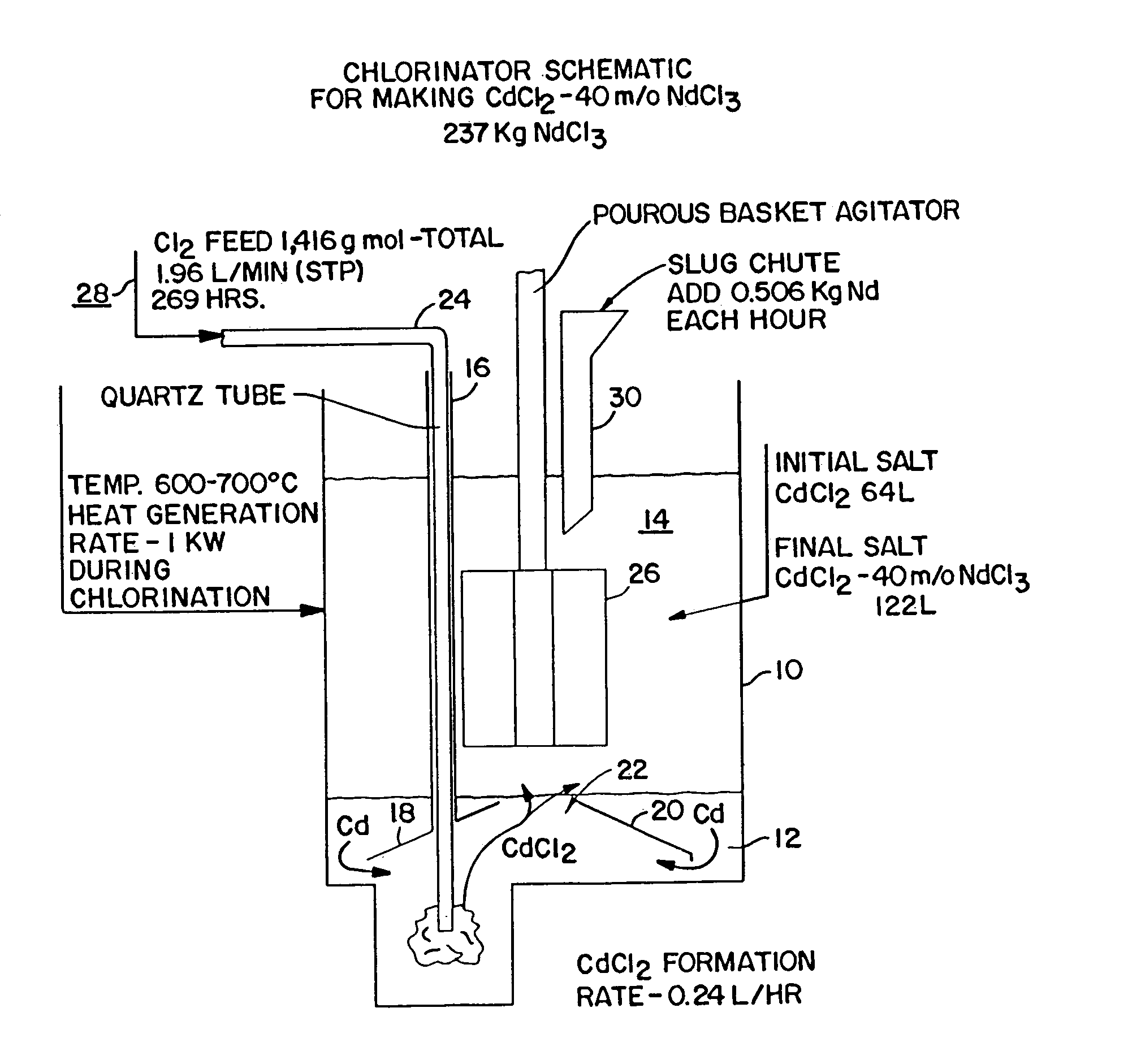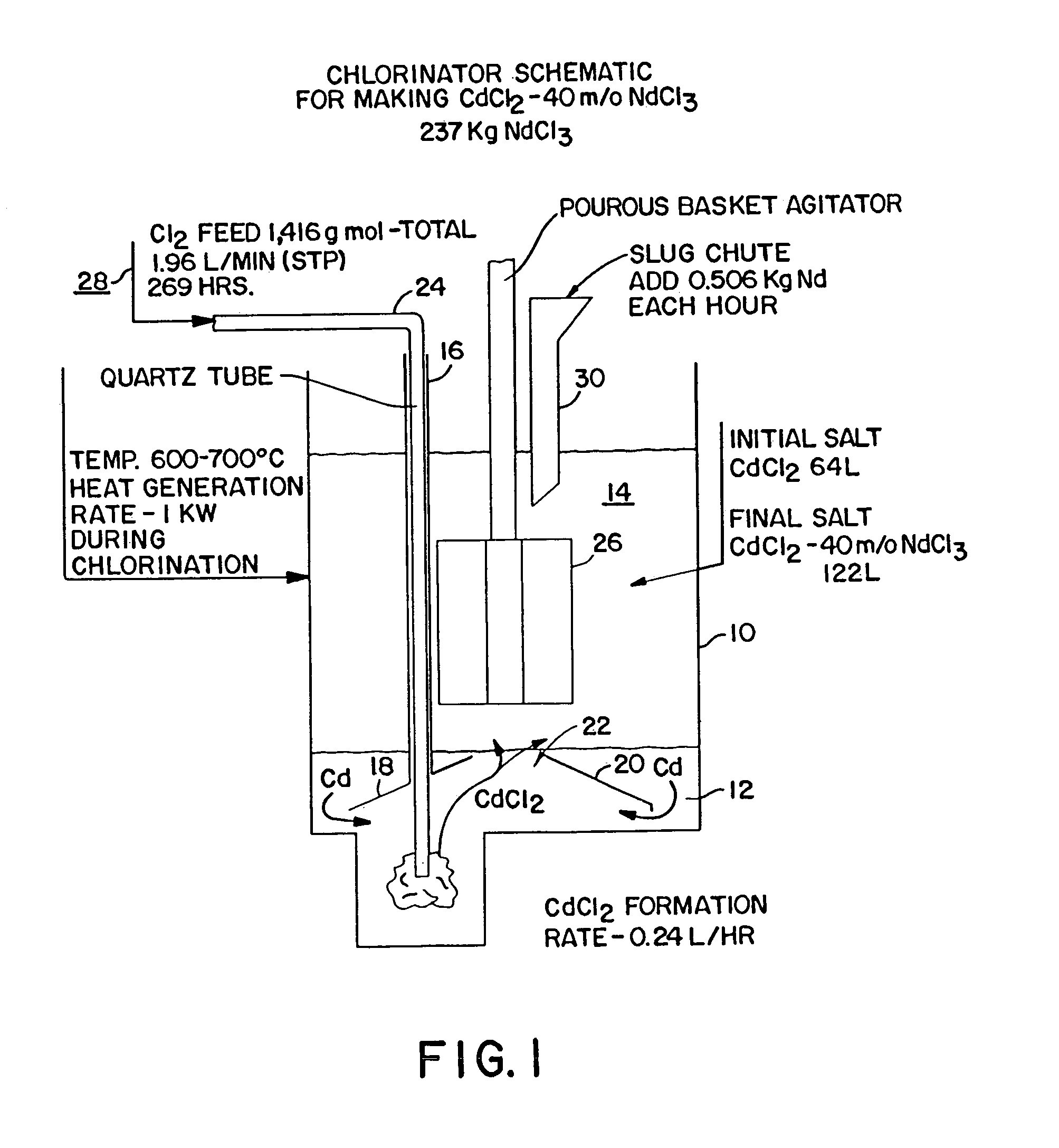Apparatus and method for making metal chloride salt product
a technology of metal chloride salt and apparatus, which is applied in the direction of magnesium halide, uranium compounds, magnesium compounds, etc., can solve the problems of cd metal waste, excessive corrosion in ferrous metal containers and any associated ferrous components, and excessive cost of metal processing
- Summary
- Abstract
- Description
- Claims
- Application Information
AI Technical Summary
Benefits of technology
Problems solved by technology
Method used
Image
Examples
Embodiment Construction
[0010]FIG. 1 depicts a schematic of the apparatus for the chlorinator employed to formulate NdCl3. As is shown in FIG. 1, the chlorination process is housed in a containment vessel 10. A layer of cadmium, Cd 12 is the base layer within the vessel 10. The upper layer 14 is initially CdCl2 molten salt. The chlorinator is kept at an operational temperature of approximately 600° C.–700° C. which results in both layers being liquids but which is less than the boiling point of either Cd or CdCl2. A hollow tube 16, preferably of a ferrous composition, penetrates the liquid salt 14 and terminates within the liquid Cd 12 while the opposing end remains above the surface of the liquid salt. In the preferred embodiment, the end of the tube 16 forms a baffle 18. A corresponding baffle 20 can be built into the container on the side opposing the tube 16. The baffles 18, 20 are arranged so that they slope upwardly to approximately the center of the vessel 10 and terminate so as to create a fixed op...
PUM
| Property | Measurement | Unit |
|---|---|---|
| Temperature | aaaaa | aaaaa |
| Temperature | aaaaa | aaaaa |
| Temperature | aaaaa | aaaaa |
Abstract
Description
Claims
Application Information
 Login to View More
Login to View More - R&D
- Intellectual Property
- Life Sciences
- Materials
- Tech Scout
- Unparalleled Data Quality
- Higher Quality Content
- 60% Fewer Hallucinations
Browse by: Latest US Patents, China's latest patents, Technical Efficacy Thesaurus, Application Domain, Technology Topic, Popular Technical Reports.
© 2025 PatSnap. All rights reserved.Legal|Privacy policy|Modern Slavery Act Transparency Statement|Sitemap|About US| Contact US: help@patsnap.com


